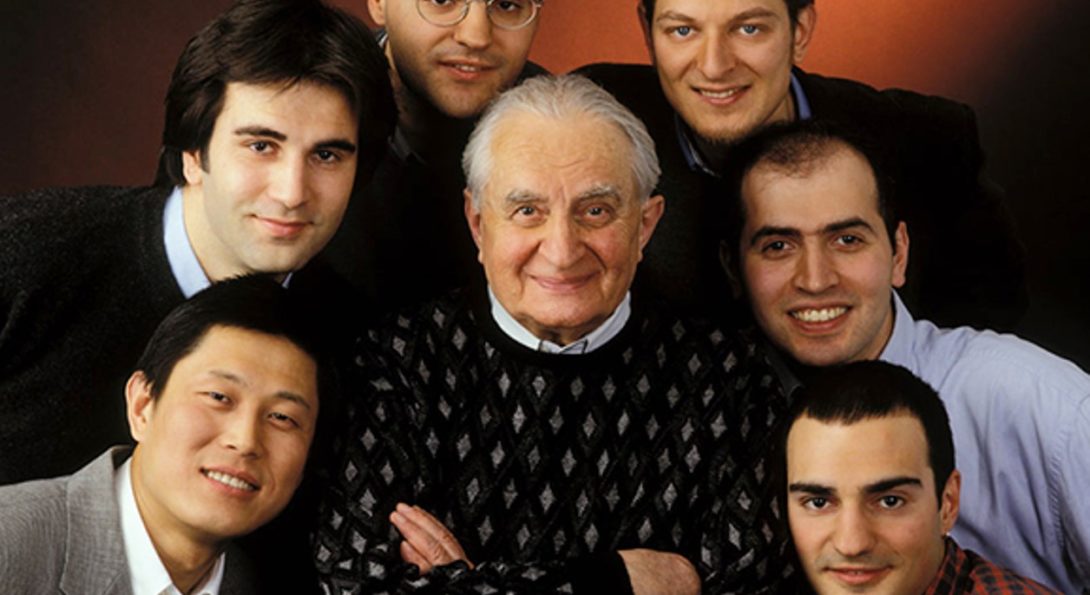Celebrating the life of Distinguished Professor Emeritus Faydor Litvin

In Memoriam: Professor Faydor L. Litvin
January 21, 1914 – April 26, 2017
On April 26, 2017, the scientific community of mechanical engineers worldwide lost a renowned scientist and educator who dedicated his life to the development of the modern theory of gearing and made enormous contributions to the development of the theory of mechanisms.
Professor Faydor Litvin was recognized as an authority in kinematics and the theory of gearing. A whole epoch in the theory of gearing is concerned with the name of Professor Litvin. He is the author of one of the most fundamental and cited works in the field — a well-known monograph, The Theory of Gearing, which underwent six editions.
Born in Russia, Professor Litvin graduated from Leningrad Polytechnic Institute in 1937 with distinction. He defended his PhD in 1944, becoming a unique, self-educated PhD holder and later received his Doctor of Technical Science degree in 1954.
From 1963, he served as department head and professor of mechanical engineering at the institute of Precision Mechanics and Optics in Leningrad. He trained and supervised nearly 100 PhD students in Russia and the U.S. as well as visiting scholars from around the world. All of them went on to receive prominent teaching and research positions in the U.S., Italy, Spain, Russia, Bulgaria, Poland, Hungary, China, Taiwan, and Australia. With great pride, they consider themselves as belonging to the “elite school of Litvin.”
In 1979, Professor Litvin emigrated to the U.S. and since then worked as a professor of mechanical engineering and director of the Gear Research Center at the University of Illinois Chicago (UIC).
His contribution to the science of mechanical engineering is enormous. He actively worked in collaboration with NASA, the U.S. Army, and the U.S. rotorcraft industry for more than 25 years. He contributed significantly to the aerospace industry, with his technology valuable in the quest for reduced noise, vibration, and stress finding its way into the upgraded attack helicopter used by the U.S. Army.
He had more than 350 publications, among them 10 monographs, and had multiple inventions — 25 in the U.S. and one used in WWII.
Professor Litvin was an ASME Fellow, an associate editor of Computer Methods in Applied Mechanics and Engineering, and a member of the honorary editorial advisory Board of Gearing and Transmissions.
He became a recipient of multiple awards, among them 12 from NASA; the Thomas Bernard Hall Prize Award from the Institution of Mechanical Engineers, UK; the Edison Award; and the IFToMM merit award (International Federation for the promotion of Mechanism and Machine Science).
In 1985, Professor Litvin was honored by the Citizenship Council of Metropolitan Chicago as “Outstanding New Citizen of 1984-1985,” recognizing his work at UIC in the area of mechanical engineering. He was awarded the Honorary Doctor of Miskolc University, Hungary, in recognition of his influence on the development of the science of noncircular gears in Hungary. He was named distinguished professor emeritus in 1993, and, in 2001, he was named the UIC’s “Inventor of the Year.”
He was admired by many as distinguished, wise, cultured, and very kind. Many of his former PhD students believed that they owed him so much for their technical and human education, always inspiring them to read, to appreciate art, literature, and music. One of his former PhD students, Kolio Minkov Petrov, who was a professor in Sofia, Bulgaria, wrote: “My dear teacher, God gave you multiple gifts, you are really a phenomenon, intellectually, and culturally. You are a person of a distinguished character with a very noble and kind soul.”
His former PhD student from Italy, Vincenzo Parenti Castelli, now an industrial engineering professor at the University of Bologna, wrote: “Somebody said that we are little people on the shoulders of a giant. He was such a giant!”